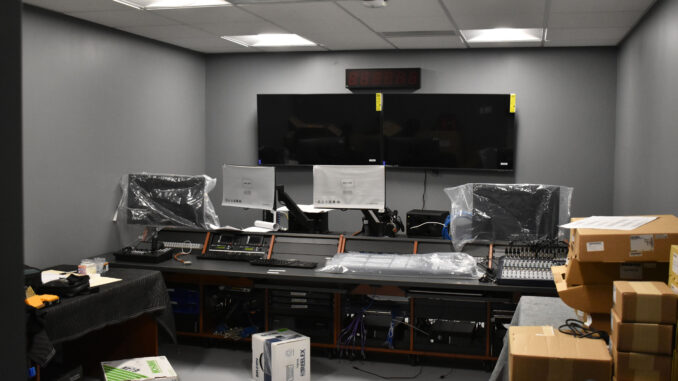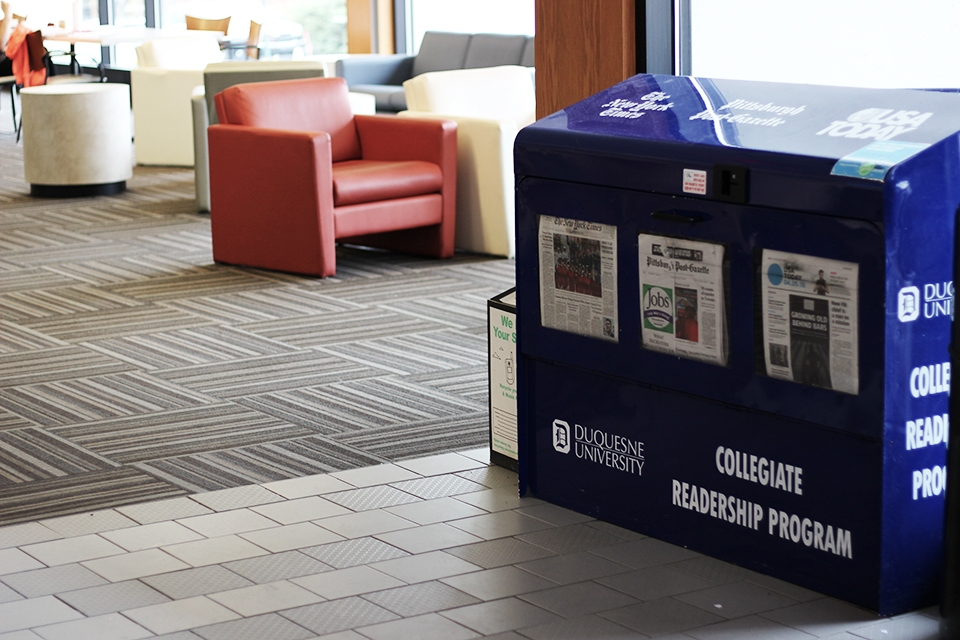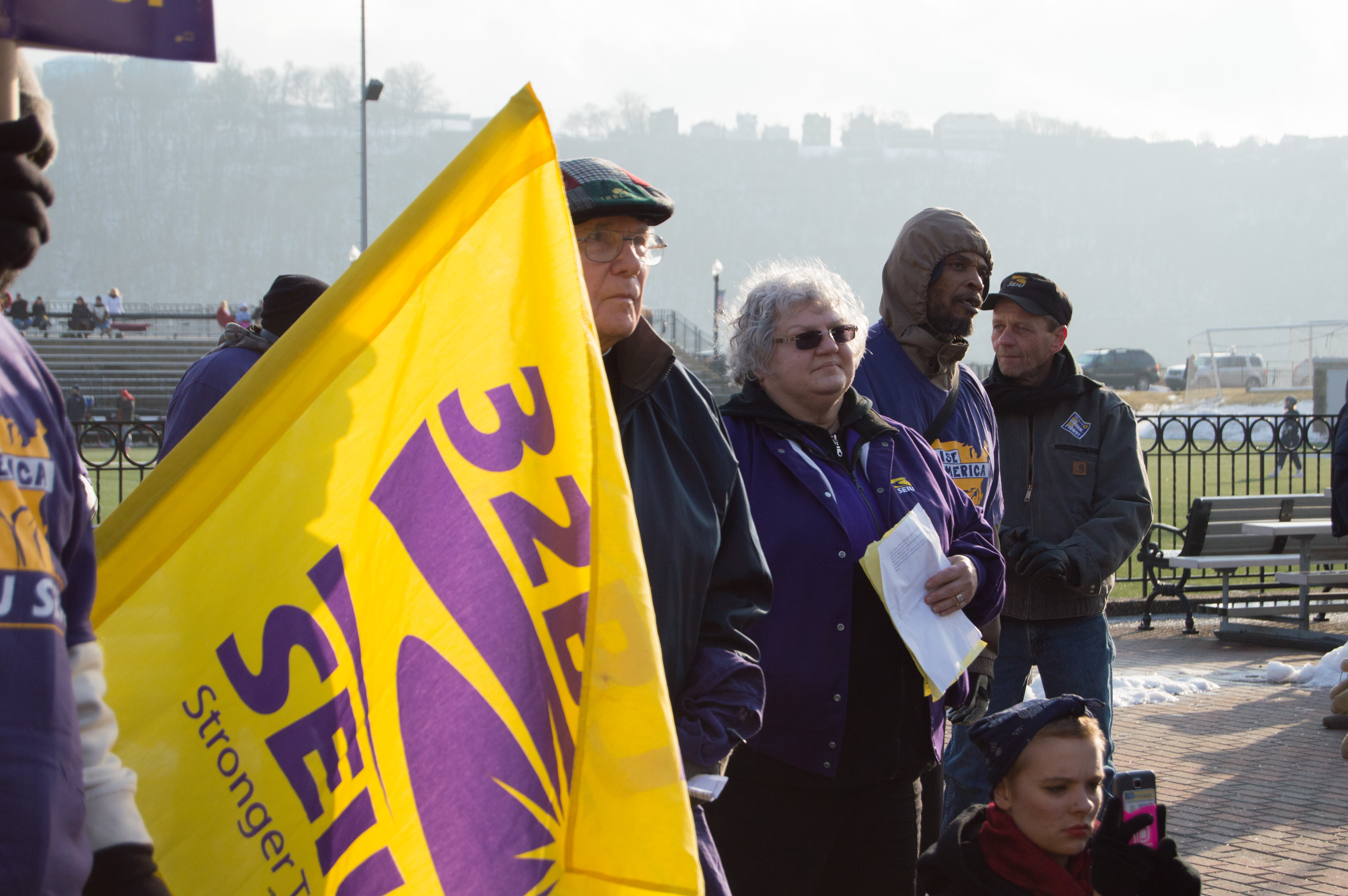
Mary Liz Flavin | news editor
Sept. 23, 2021
Lights, camera, action. The new broadcast center located on the third floor of the Union is almost finished and ready to be used by students interested in learning about media technologies, how to become content creators, and students looking to promote different organizations on campus.
The New Broadcast center, once it is completed will look like a national news or sports broadcast facility, able to produce professional broadcasts, pod-casts, live streams and pre-recorded content, according to Donald Maue, Director of the Center of Emerging and Innovative Media.
“The idea for the broadcast center has been a dream of President Gormley’s, our Dean Kris Blair and Chair Jim Vota for a long time. I am grateful that President Gormley is committed to our program, it’s quality and national visibility,” Maue said.
Renovation plans began in 2019 for the College Hall TV studio and radio station to bring them up to world class standards where later the plan to build a brand new studio came into being. The renovations of the new facility will be finished sometime in October.
The studio is split into two rooms, the control room and the main room. The control room is located behind the main room and is full of state of the art equipment including a Tricaster, soundboard, 4k monitors, remote controlled cameras and desktop monitors for editing.
The main room will have a glass exterior and house a reporter’s desk, several monitors, teleprompters, an area for guest speakers and interviewees to sit and two mounted ceiling cameras that will be automated by the control room.
Joseph Phillippi, chief studio engineer student for Duquesne Student Television (DSTV) and Duquesne Student Radio (DSR), is excited about the types of technology that will be included in the broadcast center.
“It is completely state of the art, some of the highest technologies in the world that you can get right now. We have a tricaster, but what’s amazing about this one is we are one of the select few in the entire world that has access to a tricaster like this,” Phillippi said.
Only a few TV stations and sports stadiums have access to this specific model, according to Phillippi.
The Tricaster is a TV studio in a computer designed and built by Newtek. It hold various command that help opperate the technology in the studio with the press of a button.
The studio is meant to mimic professional studios that students will be utilizing in the real world.
Another interesting feature is that the center will be completely Zoom compatible. Students can have a call halfway across the world and channel it directly to the studio with no post-production needed.
One of the aspirations of the broadcast studio is for students in all the clubs around campus to be interviewed and talk about their club. This studio was designed not only for the purpose of getting important messages broadcast such as a statement from the President, but it is also for students to share their interests and experiences with one another.
Maue and Phillippi hope to eventually implement a segment where once a month students from an organization on campus share their experiences and talk about what they are a part of. Students will be able to sign up when they would like to be featured in the studio.
Kyle Stiver, a sophomore arts in music major, can’t wait to participate in the new broadcast center. He hopes to get involved and create his own radio show.
“I will for sure be getting my hands into some projects involving reporting behind the desk and also be involved with the radio this year. I hope to be able to interview amazing people and artists and get a sense of where I want to be as I am working on my own career as an artist,” Stiver said.
Students like Stiver will be able to pursue projects with the help of the studio. They will be learning vital skills that are relevant in the industry today.
According to Maue, another way students can get involved is through the new Content Creation Practicum that focuses on students learning the facility, the technology, and the skills required to tell a compelling story through digital media.
Students can always learn more by joining DSTV and DSR. Located at the bottom of College Hall, on the first floor, students can visit the Duquesne media studio and radio studio where they can learn about the inner workings of media technology and apply it to jobs that will be offered in the new broadcast center.




